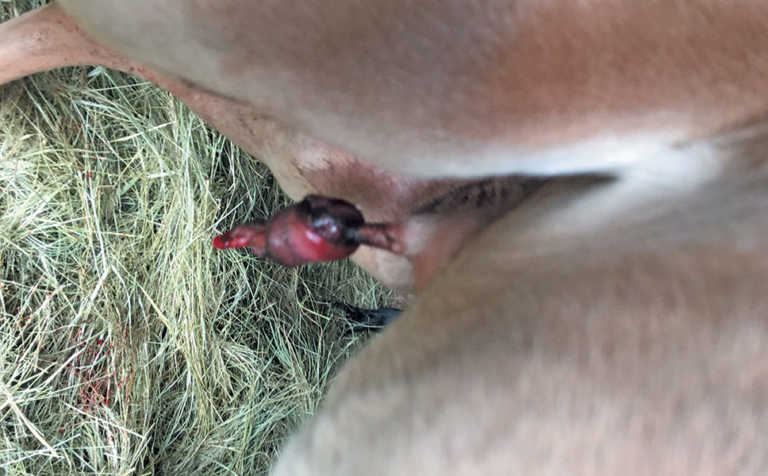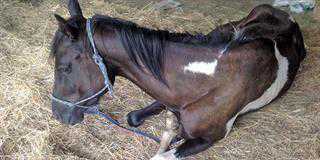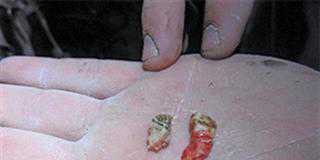
Photo: Dr Mac
After a foal is born, blood continues to pump into its body through the umbilical cord. Interrupting this process can result in a highly anaemic foal.
When the mare gets up after foaling, the umbilicus usually stretches and breaks off 2cm to 3cm from the foal’s abdomen. The stretching seals the umbilical vessels and prevents bleeding from the stump.
It is important not to tie off or cut the umbilical cord, as this can cause haemorrhaging and even infection.
A little blood will seep out for the first few minutes; this is normal.
However, if the umbilicus has not snapped by the time the foal is standing up, and the blood is still streaming out, this is an emergency, and the horse owner should phone a veterinarian immediately.
Some sources suggest that if a vet is delayed, the umbilicus should be clamped with sterile forceps, but it’s unlikely that the average horse owner would own such an instrument.
In one instance I know of, the unbroken umbilicus was so long that the foal kept stepping on it.
The owner was therefore advised to make a tight knot in the cord to shorten it. This also stopped the bleeding. A piece of baling twine was then sterilised for 20 minutes in household bleach, rinsed off with boiled, cooled water, and used to ligate (tie) the umbilicus about 3cm from the abdomen.
It’s very important not to ligate an umbilical cord too close to the belly, as it then does not dry out properly.
When the vet arrived, the cord was cut off just above the ligation, then sterilised with a diluted (2% rather than 7%) tincture of iodine. (Betadine and F10 wound spray are also effective.)
The foal was injected intramuscularly with an antibiotic as a precaution, and the umbilical stump closely observed for the next two weeks.
Leakage
When the umbilical cord fails to break, patent urachus (urine leakage) can occur. The urachus is a tube leading from the foal’s bladder through the umbilicus to the amniotic sac.
At birth, the urachus and umbilical vessels stretch and tear, then dry out and seal off. If the umbilical cord is tied off too close to the belly, the umbilical stump remains damp, the urachus stays open, and urine leaks through the hole.
The ensuing infection can extend into the abdomen.
Signs of patent urachus include an inability to control urine flow with resultant scalding and hair loss around the umbilicus and on the hind legs. Urine can be seen leaking from the umbilical area, especially when the foal strains to defecate.
This can lead to a urinary tract infection with fever, and swelling around the umbilicus. The foal becomes depressed and stops suckling.
Surgery
Antibiotics are essential at this stage, and silver nitrate is used for topical cauterisation. But if these are unsuccessful, surgery is indicated when the foal is seven to 10 days old. This involves removing the urachus and umbilical veins and arteries. The bladder is sutured and the abdominal wall closed.
Dr Mac is an academic and a stud owner.













